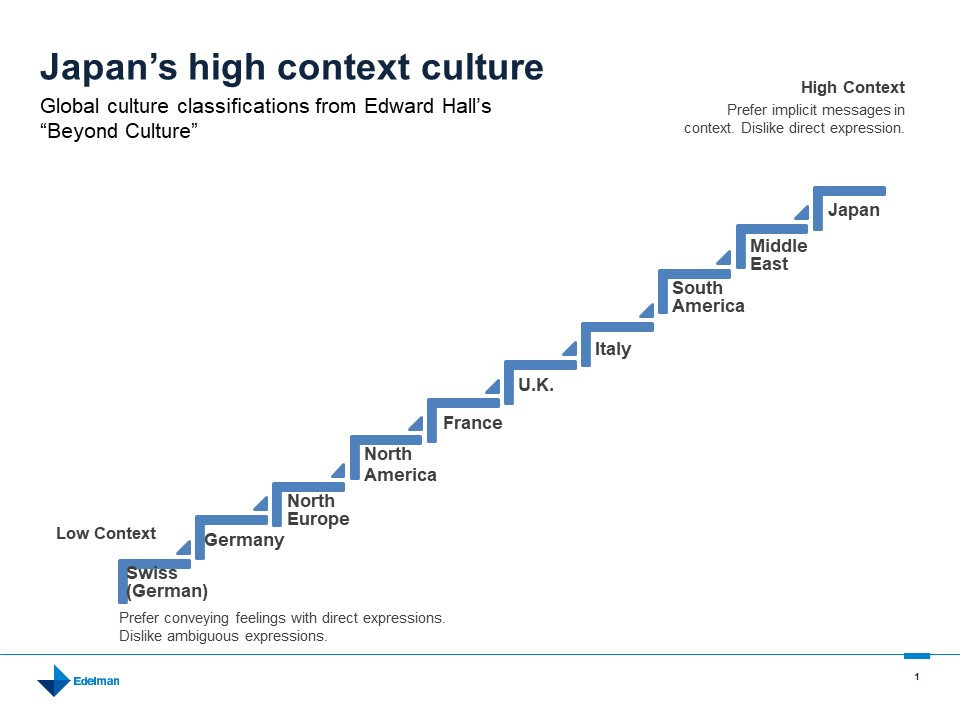In his 1976 book "Beyond Culture," anthropologist Edward T. Hall discussed the concept of high context and low context cultures. In the chart shown here, he showed Japan as the ultimate high context society. He defines a high context society as one in which implicit messages in context are preferred in communication and direct expressions tend to be avoided.
That should be so, as even today 98.5 percent of the population are Japanese. The sheer homogeneity of the culture means alignment of "common sense" and more attunement to others who all come from a similar cultural and ethnic background. This gives rise to such typical Japanese concepts such as "aun no kokyu (attunement)" and "kuuki wo yomu," the ability to "read the air."
It has also led to something that I am sure many long-term foreign residents of Japan have heard at one time or another: "We Japanese understand each other intrinsically. We do not need to make an effort to proactively communicate with each other."


















With your current subscription plan you can comment on stories. However, before writing your first comment, please create a display name in the Profile section of your subscriber account page.